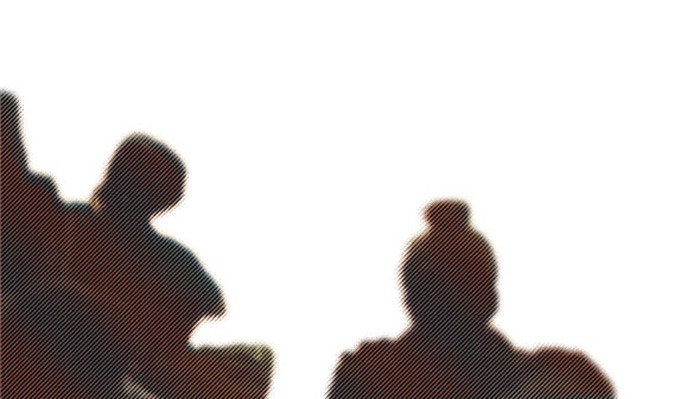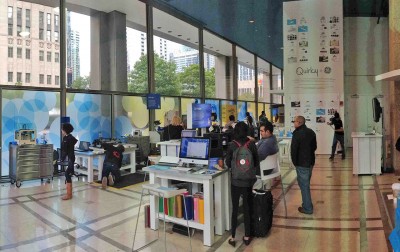The Singaporean performance artist shares his art and process with Chicago

On the night of December 31, 1993 to January 1, 1994, at a weeklong artist-organized festival in Singapore, performance artist Joseph Ng performed “Brother Cane.” The artist smacked twelve bags of red dye placed on top of twelve blocks of tofu with a cane, burned a cigarette into his arm, cut his pubic hair and recited words from the newspaper. The work decried the Singaporean authorities for the caning of twelve men accused of allegedly committing homosexual solicitations. Following governmental and media outrage, Joseph Ng was arrested and charged with committing an obscene act in public: cutting his pubic hair.
Afterwards, performance art was denied government funding and de-facto banned for the next ten years. Singapore’s Ministries of Home Affairs and the Arts released a statement explaining the government’s position: “[The Government] is concerned that new art forms such as ‘performance art’ and ‘forum theatre’ which have no script and encourage spontaneous audience participation pose dangers to public order, security and decency, and much greater difficulty to the licensing authority.”
Lee Wen, former president of The Artist Village, an independent artists’ collective, was a main organizer of the event where Joseph Ng performed. In 1994, he protested Ng’s arrest publicly and continued to make work as a performance artist despite the government injunction. He is most known for his “Journey of a Yellow Man” public performance series. Incarnating himself in full yellow body paint, he questions various social political issues. He has performed this in locations all over the world, exploring exaggerated and subverted notions of Asian identity as well as addressing experiences of migration and diaspora. His site-specific work responds to locations, contexts, and stereotyped identity, sometimes going beyond the gallery walls to interact with people in public places. As a member of the international performance collective Black Market, he performed discretely in Singapore and received invitations to present work internationally. Numerous times he approached the National Arts Council in Singapore for funding and was told that he could apply in dance or theater but not “performance art.” Vehemently against the government prohibition, he never applied under another category.
Two years after the ban was lifted in 2005, Lee Wen received the Cultural Medallion, Singapore’s most prestigious award for arts and culture. He came to SAIC this fall at the invitation of the Art History, Theory, and Criticism department and the Performance department, thanks in part to a grant from the National Art Council of Singapore. Sitting in a café in Wicker Park, I asked Lee about his reaction to Singapore’s current support for his work after the previous prohibition.

“I have been knocking on their door for years and now that it is open, of course I will enter, but I feel it is very uncomfortable. But it is necessary that I do enter,” says Lee. Wary of the country’s recent development of new infrastructures for contemporary art, he stated, “Singapore’s art fairs are a big black shiny funeral.” Rather than critically thinking about art, Lee claims that mainstream Singaporeans tend to see sponsorship of the arts as an utilitarian investment for the sake of capital gains, if not that of showing off the political power of the state.
Nora Taylor, SAIC Art History professor and advocate of Asian performance art, introduced Lee Wen at the Columbus Performance Space. She spoke highly of him, contextualizing and praising his works, such as his “Chewing Gum” series of paintings. In this work, the audience was invited to take part in a transgressive act by placing their pieces of chewing gum on a canvas, as in Singapore gum is banned. His work consistently deals with the repressive laws in Singapore, where although performance art is now legal, male homosexuality is not.
Taylor offers him a glowing introduction as well as a birthday wish. Lee Wen whispers into the microphone, “You will regret this.” From his seat he leans in, “It is a lot of people’s birthdays. It is also a lot of people’s death days. You cannot have birth without death.” He stands up, explaining that it is hard for his body to sit at times and tells the audience about his nickname, “Stagger Lee,” referring to his walking impediment. He created a series of works based on his Parkinson’s disease and ever since has been calling his work “performing the sick body.” His wild delivery and honesty about his condition, life and governmental defiance is striking.
While in Chicago, Lee Wen also shared a performance evening at Design Cloud with Myanmar performance artist Chaw Ei Thein. As an exiled person, she too understands government suppression. In her performance, she casually talks to the audience about the constant imprisonment of free thinkers in her country, as she unwraps objects, dresses and paints her face and finally presents a traditional Burmese dance. The gallery is packed, people are gathered on the floor and standing on the edges. Lee Wen is dressed in black jeans and a top. A blue yoga mat and red dress lie on the floor. He picks up a guitar, and, holding it at an unusual angle, he plays and sings of being a woman whose husband has left her. He then removes the black shirt and changes into the red dress, slowly, as a dance.

When I asked Lee about this enigmatic and personal piece, he told me that it is the beginning of a series called “The Call of the Red.” The work takes on various images to be found in a continuation of his book entitled The Republic of Daydreams, a surrealist tale of the world in art and other moments in history. The central image is that of the red dress. One day, men and women will be gathered in a red square, all wearing a red dress. But, one man will put his red dress in a block of ice as a witness to the event. The next iteration of the piece will be that of a red dress in a block of ice.
“The song came out of thinking about my mother,” he says. It is a response to tanabata, a day that commemorates the meeting of two separated lovers, a cowherd and a maiden. They meet on a rainbow bridge, only once a year. Another aspect of this legendary day is the figure of a widow, who upon seeing her husband leaving her for the other world, fears that when she finally rejoins him, he may not love her anymore, as she will age in earth time while he remains youthful.
The work, Lee says, “also relates to our ideals in society. The red you are asking me about is representing those core values, the ideals in our societies that we symbolically put on our state insignia, such as our national flags and coat of arms. Have we not forgotten them, and in doing so allow them to die? We have died as has art. Death is not only in what we see, it is also happening in us. Hence there is a constant need for change, a constant revolution in our hearts. The root word for revolution is to revolve. The world is always revolving. If we don’t keep up with it we die. And we must die as we must get born again.”








[…] Wen relates the red dress to the“ideals”and “core values”in society, the one “symbolically put on our state insignias, such as our national flags and coat of […]